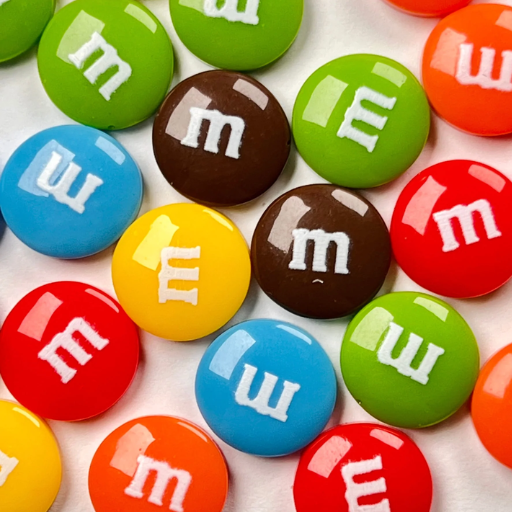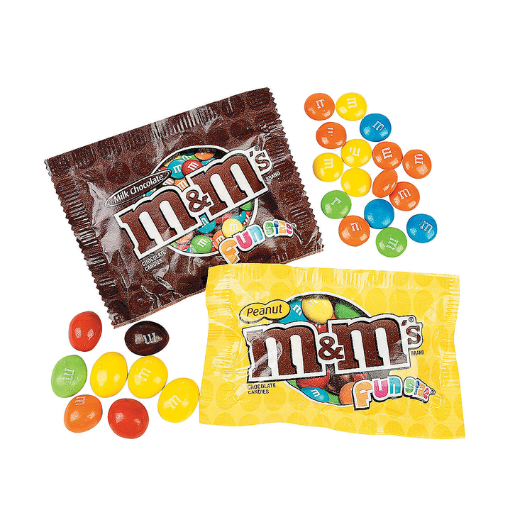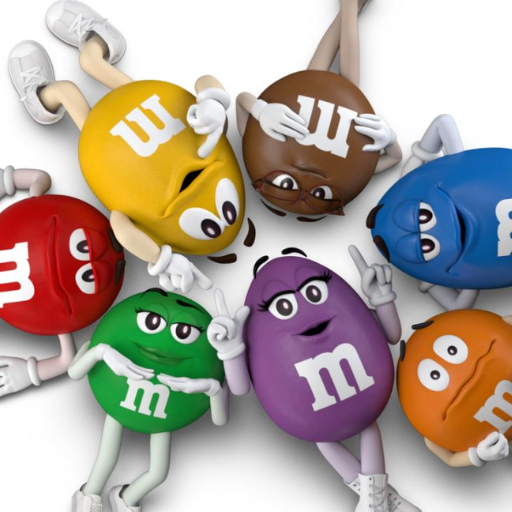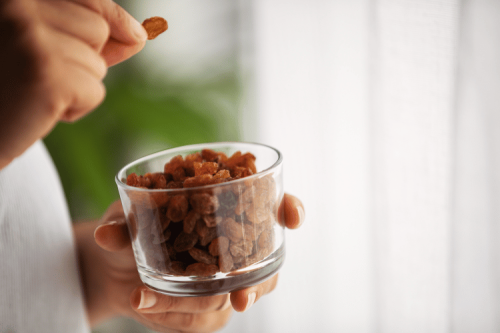Halloween is one of the most thrilling periods of the year for both children and adults. This can be a time of costumes, trick and treating, and most importantly candy. But, amidst all the excitement, there are safety issues that must not be ignored, especially the risk of giving some candies to young children. In this article, we attempt to deal with the question of the safety and the choking potential posed by M&M candies which is one of many children’s favorite candies during the Halloween rush. Ways in which some candies can be dangerous for children, strategies to pick safer treats, and look for ways of making Halloween fun while safe will be outlined. With these concerns in mind, parents and caregivers will be able to prepare their children for their Halloween fun, candy, and trick-or-treat without worries about safety.
What Makes M&Ms a Choking Hazard for Kids?

The chocolates in the form of M&M’s have a candy-coated shell which is round and shaped like a ball and it poses a choking hazard for toddlers who are below the age of four years. This hard candy-coated cover has a size similar to that of a child’s airway which makes them face problems of either swallowing or inhaling it. Children of this age are likely to not yet have enough appreciable skill in chewing to help break the candy into smaller sizes making it even more probable for the candy to get stuck in the throat. Additionally, if the candy’s shell gets stuck it is the case that because of the nature of the shell being smooth and tough, there is difficulty in dislodging it. Parents are recommended to keep a close watch at all times when young children are eating M&M’s or use appropriate other different alternatives based on age to avoid situations whereby there might be choking.
Understanding the Choking Hazard Factors
When examining choking risk factors concerning any candies and in particular M&M, some important elements should be brought to the fore first. M&Ms are round and small hence their improper chewing can easily block the airway of a child; something that is extremely risky for children below the age of four. This is especially the case for children who have yet to master sound chewing skills. The hard candy shell that encases the chocolate M&M, which is not only colorful but attractive, adds to the risk as it can be dangerous if it lands in the back of the throat. Further, children of this age group are very impulsive when it comes to eating, making any chances of choking likely. Parents need to understand these dangers, help their children during snack time, and provide them with safer and age-wise candies. Active comprehension and awareness of both children and parents of the described factors prevent excessive choking episodes and allow treats to be safely consumed.
Comparing M&Ms to Other Candy Options
When I put M&Ms alongside other types of candy, a few points stand out, based on various sources. First, the size and shape of M&Ms pose a significant risk of choking for young children as these cannot be chewed easily like most gummy candies. Health-wise, candies like M&Ms can be predominant considering they carry the same amount of sugar as other candies, for instance, Skittles or jellybeans but they set themselves apart by offering consumers the choice of these treats with chocolate coating and some may say this adds a richer taste. Also, though M&Ms are hard-shelled candies which can be a choking hazard to young children, soft-textured candies like fruit snacks or marshmallows could be good substitutes. But then again, each candy type has its own set of advantages and disadvantages, be it about the concentration of sugar or allergens so it should be done with a patient approach concerning individual requirements and situations.
Why Chocolate Might Be Safer
Many aspects have to be taken into account while assessing the safety of chocolate as a type of candy. First, chocolate does not normally have a hard shell, which is rounded and encases other candies such as M and Ms, making them a choking hazard which chocolate isn’t, at least its varieties of bars and truffles are not as hard. The chocolate, be it in the form of truffles or bars, is much softer which melts in the mouth. It is vital as it may reduce the risks involved in chomping on harder items, especially for children. Nutritional-wise, chocolate does have cocoa which has some exceedingly small quantities of minerals such as magnesium, iron, and antioxidants that could be considered useful. Other relevant issues to examine are the variations in texture such as dark, milk, and white chocolate concerning the level of cocoa as well as the level of sugar contained in them. Chocolate is less likely to expose a person to mechanical injuries in regards to some rigidity related to biting or chewing which could be avoided. Children 3 years of age and younger should always be supervised when consuming chocolate-based products.
How to Prevent Choking Hazards for Kids During Halloween?

After checking that all the dangerous toys have been removed, check your child’s goody bag first before they start eating anything they collected. Don’t allow them to eat any lollipops, gumballs, or candy which have small parts that can be choking hazards. Recommend them chocolate or gummies instead which aren’t easy to stick in the throat. When children are given treats, they should be watched at all times. They should also be told not to take more than one candy at a time, and to chew it properly. Just as important is to pre-screen all the sweets so that when his turn to eat comes there aren’t any questionable candies, or if a piece is out of the wrapper or does not look right throw it away.
Choosing Safe Candy Options
Choose candies for kids during Halloween that do not pose a risk of choking and pose a low health risk. Chocolates, gummy candies, or marshmallows are also expected to be safe as they dissolve fast and do not require much chewing. Hard candies, lollipops, nuts, sticky caramels, or chewing gum should be avoided due to their high risk of sticking to teeth which causes choking. Inspections on candies can also be carried out to check for any m manufacturing flaws such as cracks or unequal thickness. Further, it is suggested to buy candies with familiar brands instead of those with unknown brands or homemade candies as they may have unidentifiable ingredients. Whenever possible, always check the available ingredients in the candy products for allergens or harmful substances that may not be appropriate for kids. For optimal safety against such risks, children should always be monitored while eating the candies. As a result, Halloween can be a safer and more enjoyable experience for the kids.
Supervision Tips for Toddler Safety
As a parent, my toddler’s Halloween highlights are the candies and costumes, but I limit my child’s candy intake to what they can have without compromising their health. In this regard, I ensure such candies are only eaten after full permission is given and ensure the importance of not neglecting the factor of chewing. I always choose soft and easy-to-dissolve candies so that there are no chances of my toddler choking on the candy. I do not give my toddler any hard, chewy, or sticky candies. All the gathered candies are also checked for loose wrappers or other indications of factory opening before queening my child. Every step taken towards ensuring the baby’s safety enables my toddler to experience Halloween more freely without worrying about the risks involved with Halloween candies.
Creating a Choke-Free Environment
To facilitate a safer Halloween experience for toddlers, one needs to focus both on the kind of candies included and on monitoring techniques. Always pick soft and light candies that are no more than one inch in diameter so that they do not obstruct the windpipe or greater. Spheres or cylinders that could potentially obstruct airflow should be avoided. You can choose chocolates and gummies that can easily melt when chewed, hence posing a lesser danger. Always keep a close watch over your child while allowing them to move around and eat in a slow seated position so that they do not move directly around well. For those candies that are larger than what is considered to be safe, cut them into smaller pieces and teach your child not to take big bites so that he or she chews the food and swallows it slowly. Such a great approach is likely to greatly reduce the chances of choking and make Halloween safer for the toddler.
Are There Safer Alternatives to M&Ms for Young Children?

Of course, it’s logical to assume that there are better options than M&Ms for kids. One such option can be melt-in-the-mouth chocolate chips, which disperse themselves quickly and this reduces the risk of suffocation. Another alternative could be yogurt-covered raisins which can be able to provide sweetness while avoiding the hard coat. The existence of soft, fruit-flavored gummy bears that are intended specifically for toddlers can be sensible too provided they are small in size and dissolve easily once they are placed in the mouth. These substitutes do offer some tasty treats but they do not compromise the focus that is on safety.
Identifying Safe Treats for Toddlers
Firstly, as children under the age of three can be quite troublesome to feed, an emphasis must be placed on taste while ensuring that flavors and ingredients do not pose a safety hazard. In this regard, mini rice cakes and cheap doll food, in particular, are excellent siblings due to their ease of swallowing – a perfect way to avoid choking. Additionally, freeze-dried fruits have no added sugars or hard textures which are congenial for children aged three and under. On top of this, snack bars made from finely ground oats or cereals are often soft and easy to chew, meaning they can be a nutritious option as well. When choosing a product, always check the label for small parts and hard coatings and or follow your toddler during snack time.
The Benefits of Chocolate over Hard Candy
I do think that chocolate is a better option than hard candy, especially for young children, considering its advantages. According to various experts, choking hazards for chocolate are comparatively lower as it dissolves in the mouth whereas hard candies can wedge themselves in the throat. Also chocolate melts quickly so it is appropriate for toddlers who are learning how to chew. Even in diet chocolate, especially dark chocolate can be somewhat nutritious with its antioxidants which are not the case with hard candies. Therefore, when it comes to giving young children safer and healthier treats, chocolate sounds much better than hard candies for me.
Exploring Non-Choking Hazard Candy
Let’s explore some of the considerations that one would need to keep in mind while selecting non-choking hazard candies that are also safe but at the same time enjoyable for the kid. Look for candy that is soft or melt-in-the-mouth such as chocolate or would dissolve easily like the gummies making use of specially engineered ones for young kids. Any hard candy or one that has small parts that can be broken should be avoided. Some of the key technical parameters that can be useful baseline measures include:
Texture: Should not be rigid rather it should be soft and meltable, like soft gummies or smooth chocolates.
Size: Ensuring a proper size such that it poses no danger of choking, More than 2 cm in each dimension is recommended.
Dissolvability: Should melt in seconds to lower the chance of choking.
Composition: These candies should be free of any known allergies and designed for easy consumption without hard sugar coating or sticky fillings inside.
With the help of these recommendations, one would be able to pick the best candies that will not pose any choking risks and will not disappoint with taste. In such a case, even moderate supervision will be sufficient as the effect of the risk is reduced.
What Are Common Choking Hazards Found in Halloween Candy?

While picking Halloween candy, some types should be avoided, particularly among kids as they pose a choking hazard. Such hard candies include lollipops and jawbreakers which can easily get stuck in the throat due to their hardness and large size. Small round gummies or jelly beans may also pose a threat if they are both small and large because they may be slippery and simply slide into the windpipe. In the same way, chewy sweets like caramels and toffees also form a mass of food that may be hard to remove from the respiratory tract. In addition, candies that contain small pieces like nut or seed-filled chocolates can break off and become choking hazards. It is thus easier to help toddlers identify such choking hazards thereby adults can help uphold Halloween as an enjoyable holiday.
Understanding the Risks of Lollipops and Jaw Breakers
Lollipops and jawbreakers are soft candies that can be irksome and pretty dangerous when it comes to mild chewing. Considering jawbreakers can often be custom-made to be optically pleasing – this causes them to be renowned addiction pieces amongst children. Jawbreaker is high in calories and sugars and lollipops are primarily ineffective in terms of sustenance. In essence, this “edible art” adversely affects children’s diets as they can disrupt a child’s eating pattern. There are however several approaches in minimizing such effects; keeping a lollipop wrapped in its plastic skin can prevent excessive inhalation by children.
Spotting Potential Choking Hazards in Treats
When assessing the choking risk of these treats and candies, some characteristics that I take into account are their size, texture, and the materials used. For example, jelly beans or marshmallows when very small, or of an unusual shape are likely to get inhaled. I also factor in jawbreakers’ risk, since hard-shelled candies can block the airway in similar ways. Sticky or overly cheezy treats are dangerous because they will likely dig out and enclose in the throat. Moreover, chocolate having some particles, like nuts or seeds, can break and create risks while swallowing. As long as these features are well appreciated, I believe I will be more effective in the quest to protect children from risks.
How to Educate Kids on Safe Candy Usage
Encouraging children to consume candy in moderation involves a component of teaching that complements fun with responsibility. First start by explaining to them about oft perceived risks that come with different assorted candies. Tell them the importance of sitting down when eating candy and chewing thoroughly to avoid choking. Use pictures or role-play to show them the correct way to eat candy. Invite them to ask questions, share their own experiences with the sweet and what problems exactly do they encounter regarding candy.
As for technical specifications, it is appropriate to define any such target indicators but no adverse boundaries. For example, it is inappropriate to allow a child to have more than two candies at a time. Also, such candies should be smaller than the size of a child’s thumb. It is important not to let children consume all their candies at once but space it out to t which times of the day. In addition, rubbery and toffee-like candies should be discouraged since they cause excessive damage to teeth and choking highly likely. By employing direct and lucid messages and discussions with children, they learn how to be careful about the amount of candy intake.
How Do Manufacturers Ensure Choke Safety in Candy?

To avoid accident risk in candy, manufacturers follow a range of measures. First, guidelines established by the respective safety standard organizations are strictly followed whenever any more children’s candies are manufactured regarding the size and shape of the candies. For instance, little candies are formed in such proportions whereby the chances of being stuck in the throat are diminished. Even manufacturers carry out choking‐risk tests as one of the many tests done to satisfy the safety testing standards. Moreover, packs of candies are labeled with the recommendation of age and in many cases even the descriptions of how to use them to avoid the risk of choking. All these requirements minimize the possibility of such occurrences and ensure the safety of consumers.
Regulatory Standards for Preventing Choking Hazards
Efforts made to foresee and prevent the risk of choking when candies are consumed have incorporated chronic requirements as set by authorities such as the CPSC and similar organizations on an international scale. Such requirements often prescribe parameters on the dimensions of the candies, their shapes, and their textures so that the chances of children choking are eliminated. To be compliant, manufacturers must ensure a maximum dimension limit depending on the product and subject the product to bite tests so that they do not splinter. Also, labels are supposed to give guidance such as recommendations on age and warnings to enhance safety. As a result of meeting such demands, manufacturers protect people from the risk of choking while consuming candies.
Innovations in Chocolate and Candy Packaging
Changes in the use of packaging in the chocolate and candy industries have been revolutionary about safety and environmental concerns. To begin with, the logo designs of the packages have begun to have techniques that are child resistive allowing children who are under the age of five to not be able to get hold of harmful treats. On the environmental aspect, companies are opting for biodegradable and recyclable materials due to increased concern for the environment. Such attempts have been in response to the global rhetoric of regulatory frameworks and the demand from the people for environment-friendly practices. Further, there have also been improvements in packaging technology so that the freshness and shelf life of the candies are such that they can be eaten after a long time while still enjoying the safety of the product. The situation is similar to that of the new trends involving package designs which are also being developed to enhance user experience whilst ensuring safety and compliance with the requirements of the industry.
The Role of Parental Guidance in Ensuring Safety
I'd argue that parental observance would be most beneficial concerning the youngest children who haven't intended to choke on candies. Such supervision involves parental control over the youngest children’s activities during the time of having sweets and encouraging their being seated. Inhaled food poses chokers or blockers around the neck there should be a permissive education for children on chomping and restricting children from chomping while helplessly. A viable alternative is to educate parents on which kinds of candies best fit their children’s ages. Candies that exceed 1.25 inches in diameter are most preferred as they reduce the chances of blockage due to constriction and scrap out easily when lakes bite hard onto the material. It is very difficult for younger children who may want to swallow chewy or round candies and as such, parents should avoid providing them the older children manually. Following such measures can help young children’s lives being able to cause fewer accidents as a result of the rest being adequate to encourage consumption.
References
Frequently Asked Questions (FAQ)
Q: Are M&Ms considered choking hazards for young children?
A: Yes, M&Ms, especially peanut M&Ms, can be choking hazards for young children due to their small, round shape and hard candy coating. It's essential to be cautious when offering them to little kids.
Q: What are some safe Halloween candy alternatives for toddlers?
A: Instead of candies like jawbreakers and small round lollipops, consider softer options like chocolate, which is generally softer, or items like animal crackers and cookies.
Q: How can I ensure Halloween candy is safe for my young child?
A: Always supervise your child while eating candy, avoid candies that are small, round, or hard like laffy taffy and jawbreakers, and ensure they are sitting down while eating.
Q: Are there any candies I should avoid giving to toddlers during Halloween?
A: Try to avoid giving anything super chewy like taffy, or hard candies like jawbreakers, as these are common candy-choking hazards for young children.
Q: What should I do if I'm not sure about something being a choking hazard?
A: If you're not sure about something, it's best to err on the side of caution and keep it away from young children. Always prioritize safety first.
Q: Can peanut butter candies be safely given to toddlers?
A: While peanut butter candies like Reese’s peanut butter cups and Reese’s pieces are softer, they can still pose a risk due to their size. Always cut them into smaller pieces to minimize any choking hazards.
Q: How can I make Halloween fun for toddlers while ensuring safety?
A: Try to have the kids participate in activities together that have less risk of choking hazards and have fun exploring non-candy treats and safe snacks.
Q: Is it safe for toddlers to eat chocolate candies?
A: Chocolate is generally softer and may be safer for toddlers than hard candies, but always ensure the pieces are small enough to prevent choking.
Q: What are some safe ways to include candy in toddler life during Halloween?
A: Opt for softer treats and enjoy them in a safe environment. Always monitor your toddler while they are eating to prevent accidents.








 Login with Google
Login with Google Login with Facebook
Login with Facebook